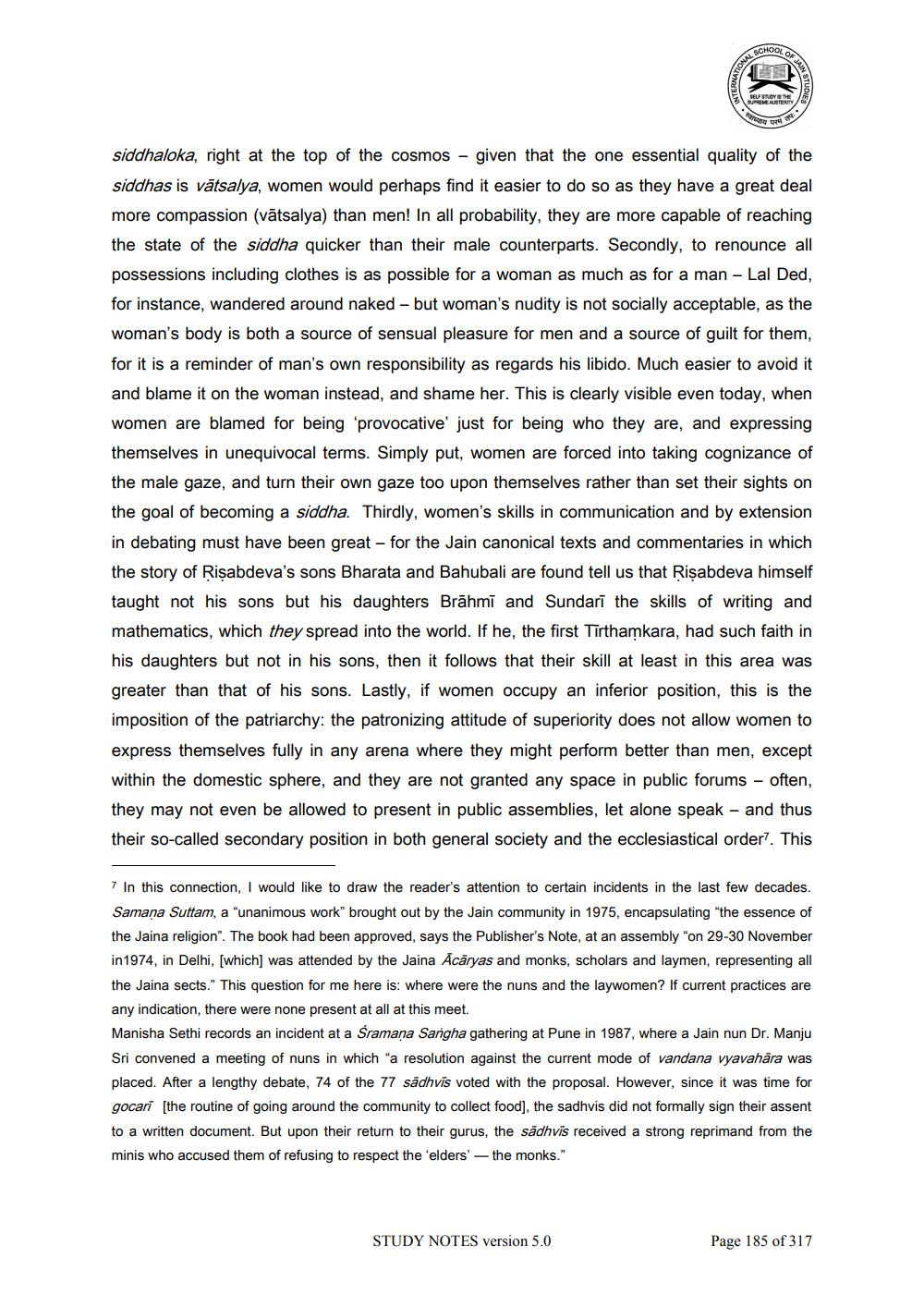________________
siddhaloka, right at the top of the cosmos - given that the one essential quality of the siddhas is vātsalya, women would perhaps find it easier to do so as they have a great deal more compassion (vātsalya) than men! In all probability, they are more capable of reaching the state of the siddha quicker than their male counterparts. Secondly, to renounce all possessions including clothes is as possible for a woman as much as for a man - Lal Ded, for instance, wandered around naked - but woman's nudity is not socially acceptable, as the woman's body is both a source of sensual pleasure for men and a source of guilt for them, for it is a reminder of man's own responsibility as regards his libido. Much easier to avoid it and blame it on the woman instead, and shame her. This is clearly visible even today, when women are blamed for being 'provocative' just for being who they are, and expressing themselves in unequivocal terms. Simply put, women are forced into taking cognizance of the male gaze, and turn their own gaze too upon themselves rather than set their sights on the goal of becoming a siddha. Thirdly, women's skills in communication and by extension in debating must have been great - for the Jain canonical texts and commentaries in which the story of Risabdeva's sons Bharata and Bahubali are found tell us that Risabdeva himself taught not his sons but his daughters Brāhmi and Sundarī the skills of writing and mathematics, which they spread into the world. If he, the first Tirthamkara, had such faith in his daughters but not in his sons, then it follows that their skill at least in this area was greater than that of his sons. Lastly, if women occupy an inferior position, this is the imposition of the patriarchy: the patronizing attitude of superiority does not allow women to express themselves fully in any arena where they might perform better than men, except within the domestic sphere, and they are not granted any space in public forums - often, they may not even be allowed to present in public assemblies, let alone speak - and thus their so-called secondary position in both general society and the ecclesiastical order? This
7 In this connection, I would like to draw the reader's attention to certain incidents in the last few decades. Samana Suttam, a "unanimous work" brought out by the Jain community in 1975, encapsulating the essence of the Jaina religion". The book had been approved, says the Publisher's Note, at an assembly "on 29-30 November in 1974, in Delhi, [which) was attended by the Jaina Acāryas and monks, scholars and laymen, representing all the Jaina sects." This question for me here is: where were the nuns and the laywomen? If current practices are any indication, there were none present at all at this meet. Manisha Sethi records an incident at a śramana Sargha gathering at Pune in 1987, where a Jain nun Dr. Manju Sri convened a meeting of nuns in which "a resolution against the current mode of vandana vyavahāra was placed. After a lengthy debate, 74 of the 77 sādhvīs voted with the proposal. However, since it was time for gocari [the routine of going around the community to collect food), the sadhvis did not formally sign their assent to a written document. But upon their return to their gurus, the sadhvis received a strong reprimand from the minis who accused them of refusing to respect the elders' - the monks."
STUDY NOTES version 5.0
Page 185 of 317




